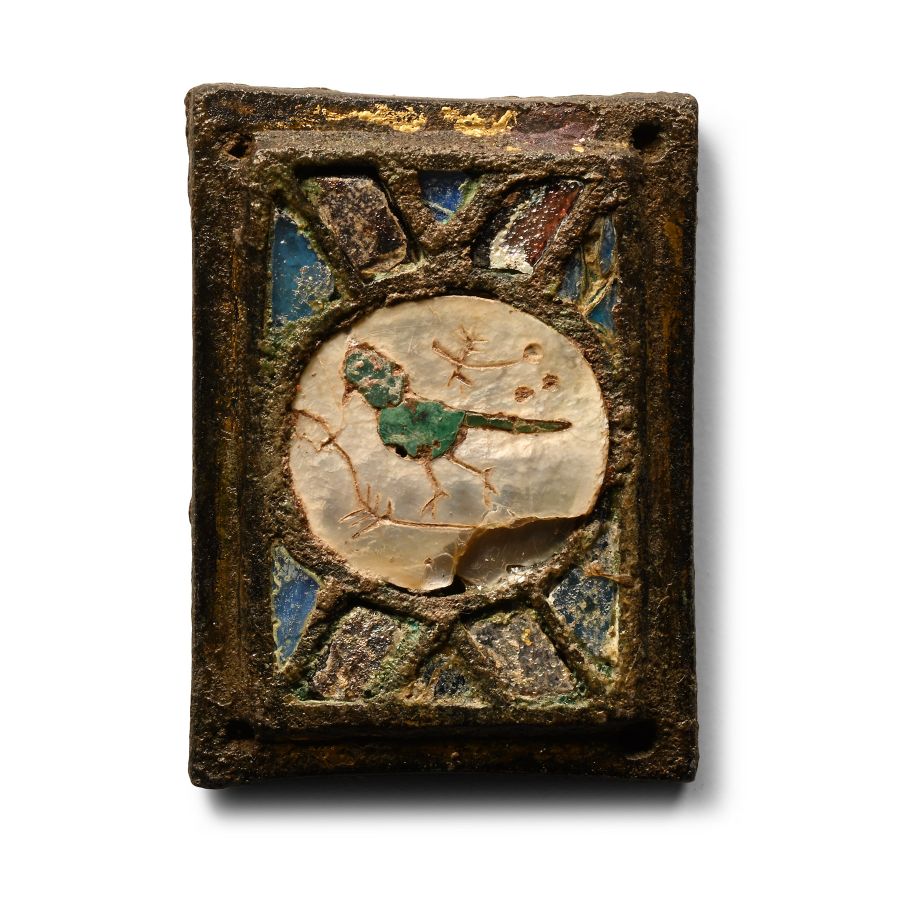ROMAN BRONZE PLAQUE WITH EROS ON LION CIRCA 2ND-4TH CENTURY A.D. 4 in. (182 grams, 10.2 cm high). Modelled in relief with openwork elements, stylised detailing to both figures; hollow reverse. PROVENANCE: Acquired 1990s-early 2000s. East Anglian private collection. LITERATURE: Cf. Mille, B., 'The Casting Techniques of Antique South Arabian Large Bronze Statues,' in Jett, P., McCarthy, B. and Douglas, J.G. (eds.), Scientific Research on Ancient Asian Metallurgy: Proceedings of Fifth Forbes Symposium at the Freer Gallery of Art, Washington, Smithsonian Institution, 28-29/10/2010, Washington, 2012, pp.225-247, fig.5, for similar images. FOOTNOTES: Hollow cast bronze images of Eros riding a lion are linked to the Eastern Levant and have been found for example in Tamna, probably a Roman import. The importance of the long-distance contacts within the Eastern Mediterranean areas was rapidly reflected in provincial artistic styles, probably as soon as in Hellenistic times, at the beginning of the third century B.C., possibly even earlier. The unquestionable Greek influence led a number of scholars to define three main styles for the bronzes discovered in the eastern Roman provinces: a local type and iconography locally produced, Greek or Roman imports, and Oriental, Hellenistic, or Roman style, locally produced. CONDITION
ROMAN BRONZE PLAQUE WITH EROS ON LION CIRCA 2ND-4TH CENTURY A.D. 4 in. (182 grams, 10.2 cm high). Modelled in relief with openwork elements, stylised detailing to both figures; hollow reverse. PROVENANCE: Acquired 1990s-early 2000s. East Anglian private collection. LITERATURE: Cf. Mille, B., 'The Casting Techniques of Antique South Arabian Large Bronze Statues,' in Jett, P., McCarthy, B. and Douglas, J.G. (eds.), Scientific Research on Ancient Asian Metallurgy: Proceedings of Fifth Forbes Symposium at the Freer Gallery of Art, Washington, Smithsonian Institution, 28-29/10/2010, Washington, 2012, pp.225-247, fig.5, for similar images. FOOTNOTES: Hollow cast bronze images of Eros riding a lion are linked to the Eastern Levant and have been found for example in Tamna, probably a Roman import. The importance of the long-distance contacts within the Eastern Mediterranean areas was rapidly reflected in provincial artistic styles, probably as soon as in Hellenistic times, at the beginning of the third century B.C., possibly even earlier. The unquestionable Greek influence led a number of scholars to define three main styles for the bronzes discovered in the eastern Roman provinces: a local type and iconography locally produced, Greek or Roman imports, and Oriental, Hellenistic, or Roman style, locally produced. CONDITION















Testen Sie LotSearch und seine Premium-Features 7 Tage - ohne Kosten!
Lassen Sie sich automatisch über neue Objekte in kommenden Auktionen benachrichtigen.
Suchauftrag anlegen